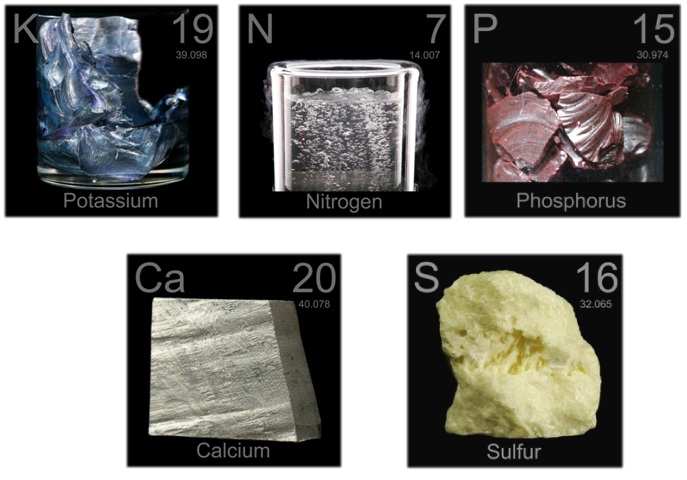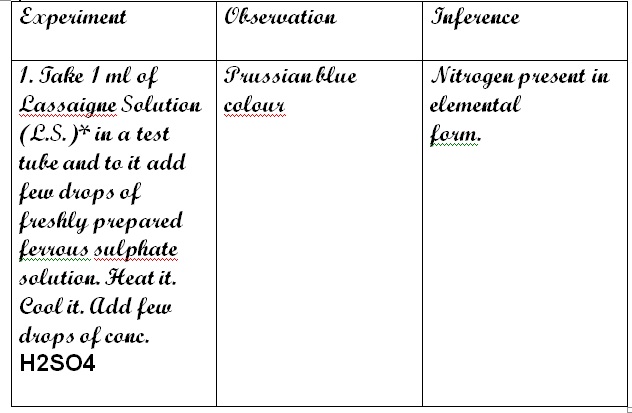





Published on Apr 02, 2024
Plants need to be fertilized because most soil does not provide essential nutrients required for optimum growth. Even if the person is lucky enough to start with great garden soil, as your plants grow, they absorb nutrients and leave the soil less fertile. Nutrients in the soil also help plants grow strong. Some nutrients that plants need are nitrogen, phosphorus, potassium, calcium, magnesium, and sulfur.
Fertilizers, also known as food elements, are materials produced to supple these elements in a readily available form of plant use. It helps to make plants grow faster which help some farmers and gardeners for their business. Choosing the right fertilizer help us to get everything we need from the plants we eat or from the meat of animals that eat plants. Plants are factories that do all of the work to process the basic elements of life and make them available to us.
Fertilizers help feed the world. The FARO has stated that “after land and water, fertilizers are probably the most important input leading to increased yields”. It is inherently difficult to estimate the share of fertilizers in increasing agricultural output since so many factors are involved. It has been estimated that fertilizer contribute about 40% of the nitrogen in human protein consumption, it follows that nearly one third of this protein depends on fertilizers. Therefore, it is important for us to know which fertilizers to use for us to sustain properly the needs of every plant.
Increased crop production largely relies on the type of fertilizers used to supplement essential nutrients for plants. Fertilizer application is required to replace crop land nutrients that have been consumed by previous plant growth with the ultimate goal of maximizing productivity and economic returns. Now a day, there is increased emphasis on the impact on soil environment due to continuous use of chemical fertilizers. The impact of chemical fertilizer application on agricultural land is seen not only in terms of the soil quality but also on the survival of soil organisms dwelling there in.
Chemical fertilizers provide three major plant nutrients; nitrogen, phosphorus and potassium or NPK. However, the ever increasing cost of commercial fertilizer products driven, in part, by the inevitable depletion of global phosphorus, is forcing producers to look for alternative sources like bio-fertilizers and other organically-based solutions.
In literature, some researchers have concluded the chemical fertilizers to be harmful for soil organisms but on the contradictory they have been supported too to be beneficial as far as their food supply is concern. The primary advantages of using biosolids as a fertilizer alternative are cost efficiencies and the presence of nutrients and organic matter. Returning these valuable materials back to the soils is a critical element in long-term sustainability.
This research aim to compare 2 different brand of fertilizer: Chemical fertilizer and Citrus Sinensis Peeling (bio-fertilizers), specifically the researchers sought to answer the following questions:
• How do the researchers determine the effectively of these product?
• What are advantages and disadvantages of using these fertilizers?
• Which fertilizer will make plants grow faster and healthier?
• Which fertilizer is better and safer to use: Citrus Sinensis Peeling or branded fertilizer
The researchers will determine the effectivity of the product by testing the effectivity of 2 brand of fertilizer in separate plants (Plant A and Plant B). After the testing, the researchers will record the result and make a statement about the research.
The study is beneficial to:
The benefit of this study will help them to improve the quality of their products, save time with their work, and get a higher profit.
The benefit of this study will help our environment by helping the soil and plants to sustain their needs and provide the essential nutrients required for optimum growth.
The benefit of this study will help them to give a good service to their customers by giving them a high and good quality products (ex: rice, vegetables, and fruits)
The benefit of this study will help the community to sense this as a source of income if made into a business.
The following technical terms are defined in this study.
• Nitrogen- tasteless odorless gaseous chemical element
• Phosphorus- poisonous waxy chemical element
• Potassium- silver white metallic chemical element
• Calcium- a soft gray alkaline earth metal, fifth most abundant element by mass in the earth’s crust.
• Sulfur- an abundant, multivalent non-metal
• Citrus Sinensis- the scientific name of sweet oranges. It is what most consumers commonly buy.

The research about the comparison between 2 different brands of fertilizer was aimed to help the community to be aware of the importance of fertilizers and also to give them the information in which fertilizer to use for their plants. Books, internet, and other references materials were used as the primary sources of information to strengthen the researchers’ view on this topic. But these were not enough, so experiments were conducted by the researchers to gain additional information.
• Pot A and Pot B
• Good quality of soil
• Seeds to be use (any kind of plant: pechay)
• Water
• Sunlight
• Branded Fertilizer
• Orange peelings
1. Sow seeds thinly on shallow furrows across the seed pot, and cover lightly with fine topsoil. Do not broadcast seeds when sowing to avoid thick germination in one place.
2. Water the seed pot daily. Watering and other cultural management practices should be regularly done.
3. Apply liberal amount of fertilizer (Citrus Sensis Peeling for pot A and branded fertilizer for pot B) at the base of the plants, then cover lightly with soil and water immediately.
4. Water the plant whenever necessary or depending on your own judgment or observation of the plant
5. Always remember to give both pots a presence of sunlight for their process of growing.
6. Every week, measure the height of both plants.
As long as the researchers followed the procedures, success of experimentation will be achieved. Factors such as sunlight could affect the study. In addition, if this is not available, possible that this study could fail. However, researchers could try it once more again and again until the study is evaluated.
NITROGEN:
Major fertilizers containing N:
(a) Ammonium nitrate (NH4NO3)
(b) Potassium nitrate (KNO3)
(c) Urea (NH2CONH2)
(d) Ammonium sulphate [(NH4)2SO4]
Most of nitrogen fertilizers are obtained form synthetic NH3. This chemical compound is used as gas or in water solution or it is converted to salts.
Nitrogen Deficiencies
(a) Pale, green, yellow leaves
(b) Stunted growth
Nitrogen in Excess –
(a) Lower disease resistance
(b) Weaken stem
(c) Decay maturity
(d) Lower fruit quality
PHOSPHORUS:
Major fertilizers containing P:
(a)DAP – Diammonium phosphate [(NH4)2PO4]
(b)Ca3(PO4)2 – Calcium phosphate
(c)Triple phosphate and super phosphate
Most phosphoric fertilizers are obtained by the treatment of calcium phosphate with H2SO4 and phosphoric fertilizers. Calcium phosphate is mainly derived from phosphate rock and bones. Phosphate rock is found in deposits of sedimentary origin laid down on beds of ocean floor.
Phosphorus deficiencies –
(a) Pale purple colour on the underside of leaves
(b) Reduced flower, fruits and seed production
1. Encourage cell division
2. Hastens maturity, offsetting quick growth caused by N
3. Encourage root growth
4. Increase disease resistance
1. Causes dehydration of roots
2. Increase soluble salt content of medium
Major fertilizers containining K:
1. Potassium chloride (Potash)
2. Potassium nitrate (KNO3)
It is the seventh most abundant element found in earth’s crust. Potassium chloride which is principal commercial form of potash and some KNO3 is also used for production of potash fertilizer.
1. Leaves appear dry and scorched
2. Irregular yellow areas on the surface
1. Increase disease resistance
2. Encourage healthy root and stems
3. Essential for starch formation
4. Efficient use of CO2
1. Affects soil acidity
2. Reduced flower, fruit and seed production
Fertilizer has Ca2+ as cation. (The fertilizer detected is Vermi Compost).

The given fertilizer has N in elemental form. (The fertilizer detected is urea).
(Urea)
O.C.N + Na NaCN
Ca2+ (aq) + CO32(aq) CaCO3 (s) +2CH3COOH + CaCO3 Ca [CH3COO]2 + H2O +CO2+Ca2+ (aq) +C2O42CaC2O4(s)
1. google.com
2. wikipedia.org
3. vlib.us
4. toppersarena.com
5. jmooneyham.com
6. ianrpubs.unl.edu